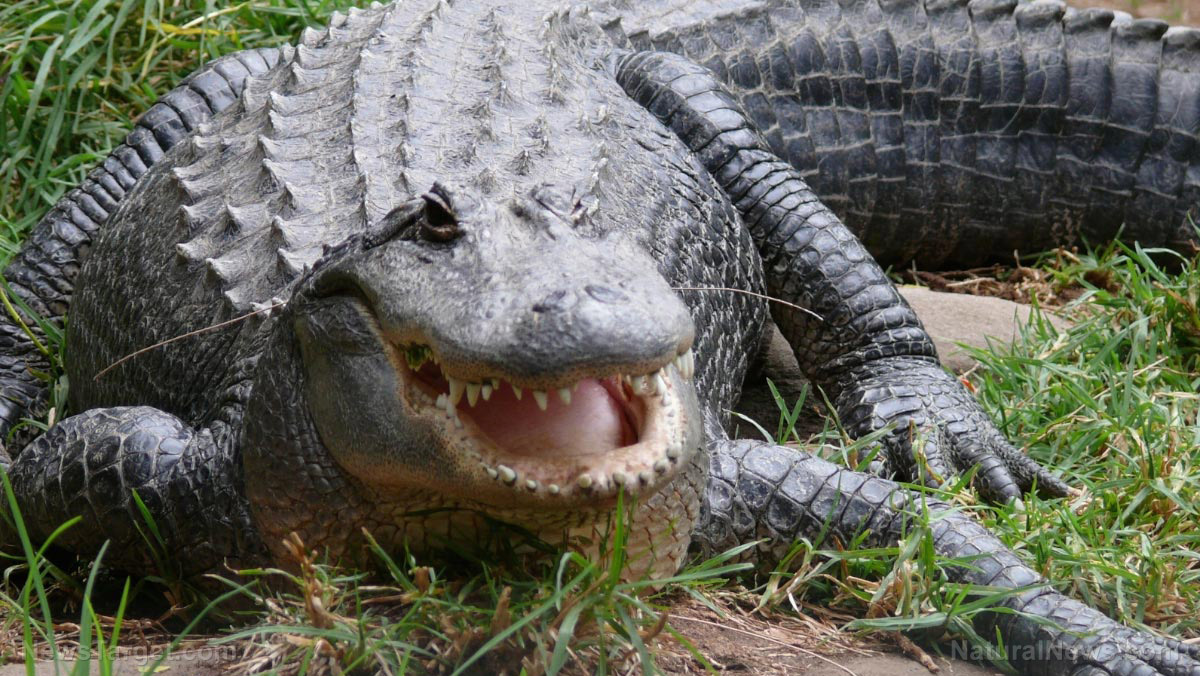Brazil dig unearths evidence of a new desert-dwelling dinosaur species
04/10/2020 / By Arsenio Toledo

Paleontologists working in southern Brazil have unearthed a new species of dinosaur. This particular species was carnivorous and used its claws to capture small prey over 90 million years ago.
The new dinosaur, called the Vespersaurus paranaensis, was a theropod, or a bipedal carnivorous dinosaur. Popular theropods include the T-rex and the Velociraptor. Paleontologists have been trying to find Ves. paranaensis for decades before the discovery of its fossil.
The existence of Ves. paranaensis was speculated upon as early as the 1970s, when unidentifiable dinosaur footprints were discovered in Cruzeiro do Oeste, a municipality in the southern Brazilian state of Parana. Thanks to the fossil discovery, paleontologists now believe those footprints belonged to Ves. paranaensis.
“It’s incredible that, nearly 50 years later, it seems that we have discovered what type of dinosaur would have produced those enigmatic footprints,” said Paulo Cesar Manzig of the Paleontology Museum of Cruzeiro do Oeste. Manzig and his colleagues published their findings in the journal Scientific Reports.
Ves. paranaensis had a “unique anatomy”
One unique thing paleontologists noted about Ves. paranaensis is that, even though it brandishes two large claws on each foot, it may have walked around using just one toe. This large toe jutted out of the middle of each foot, and its two other toes on either side would have been raised and have had large claws, which it would sink into its prey to kill it.
Manzig and his colleagues described the multi-bladed claws as “straighter and sharper” than those found in related dinosaurs, which would have made them perfect for slashing and slicing. Ves. paranaensis’ mouth was also terrifying, as it was filled with sharp, serrated teeth.
As ferocious as this may sound, its size doesn’t make Ves. paranaensis seem like much of a threat. The fossil record makes paleontologists believe that it stood at no higher than 2.6 feet high (31.5 inches) and no longer than 5.2 feet long (1.6 meters). Paleontologists further estimate that Ves. paranaensis may have weighed just 33 pounds (15 kg). Its vertebrae also had air-filled cavities, similar to the bones of modern-day birds. This would have made it quick on its feet.
Ves. paranaensis discovery gives paleontologists hope for future digs
The Ves. paranaensis fossil was found in the northeastern region of Parana. Scientists classify this area as part of the Parana Basin. Millions of years ago, the Parana Basin, which includes southern Brazil, northern Argentina, Paraguay and Uruguay, was believed to be a large desert known as the Botucatu desert. (Related: Construction site turned dinosaur dig: Workers unearth 68-million-year-old Triceratops fossil.)
Paleontologists have discovered other dinosaur species within the Parana Basin. According to scientists, the discovery of Ves. paranaensis may even “catapult” new paleontological investigations in the region.
“It is a rich but little explored area that would surely bring great news to the world of paleontology,” said Neurides de Oliveira Martins, who also works as a paleontologist for the Paleontology Museum of Cruzeiro do Oeste.
Ves. paranaensis is the first in its family of therapods – known as noasaurine dinosaurs – that has been found with multiple, examinable fossils. However, Manzig, Martins and their colleagues wrote in their study that this still isn’t enough.
They hope to find more Vespersaurus fossils in future digs. Their goal is to find more complete fossils. More fossil data would help them prove or disprove the link between Ves. paranaensis and three other noasaurine dinosaurs they believe are related to it: Noasaurus leali, Velocisaurus unicus and Masiakasaurus knopfleri.
Dig up more stories and studies on newly discovered dinosaurs at Discoveries.news.
Sources include:
Tagged Under: animals, Brazil, Dinosaurs, discoveries, fossils, noasaurine dinosaurs, paleontology, prehistoric, research, therapods, Vespersaurus
RECENT NEWS & ARTICLES
COPYRIGHT © 2017 REAL SCIENCE NEWS



















